The First Investigations into the Effect of
“Emotional Process Monitoring” (epb)
on the Human Organism and on the
Symptom Change in Migraine Patients
Research proved a long time ago that body, spirit and soul are inseparably connected together. It is also known, that negatively felt experiences as well as traumas from our earliest childhood or the prenatal phase make an impression on us and accompany us into our adult age, and influence our activities and action whether or not we are aware of it. We know about the connections between the development of symptoms and whole complicated clinical pictures through the suppression of negative emotions like for example sorrow, sadness, annoyance, anxiety, fury, rage, despair and grief.
In the meantime, more and more therapists are giving serious thought to the question of healing at all levels, especially with the healing strength of our consciousness over processes of visualization and also over imagined actions.
Brain research can already prove that imaginary actions activate the same cerebral areas as real actions. Beyond that it is suspected that even nerve cells can form anew and through new circuitry in the neurons old information storage can be newly “programmed”. Expressed simply this presumably means that the “data” of all our experiences and feelings do not get lost, they are probably decoupled, worked on, linked again and stored differently. The result of it is, and I experience this daily in my practice, that afterwards the patient perceives the events differently, partially also again consciously, and mostly does not feel as burdened. These burdens could work away absolutely unconsciously for years as disease triggers and under the circumstances could have also blocked the success of most different treatment methods.
A Trip to the “Inner I”
The “emotional process work” (epa) was further developed between 1990 and 1993 by Dorothea von Stumpfeldt, MD from the “Emotional Body Therapy” (EKT) which Dr. von Stumpfeldt founded with Ann Söller (physiotherapist) and Susanna Lübcke, MD (allergist). An application of the “emotional process work” is the “emotional process monitoring” (epb). It is a very mild and gentle method allowing the patient access to his subconscious about repressions (conflict issues, events, etc.) that are connected with negative feelings, to consider them again, to accept them and to affectionately and carefully resolve them. In addition the therapist gives assistance to the patient carefully from the outside and monitors without manipulating through this process. During the whole process the participant is still partially in daytime consciousness and also more or less perceives the order of events and noises around him.
First the patient takes a comfortable position, preferably lying, closes his eyes and slowly tries to let go of the thoughts of everyday life. Indeed already here he can require help from the therapist because it is very difficult for many patients to just simply switch off their thinking. For this the participants are asked to consciously perceive themselves physically and to describe the feelings (e.g. heart palpitation, pressure on the chest, tension in the back, pains, etc.) that may thus still also be minor. Then it is necessary to give these feelings special attention as the therapist questions the patient about his state of mind. Although one believes that these physical signs express themselves only by chance, nevertheless hidden behind some of these are more complex and more deeply lying issues on the psychological-emotional level (achievement pressure, fear, conflict situation, trauma, loss issues, grief, etc.). Often these experience situations are coupled with negative emotions (sorrow, sadness, annoyance, anxiety, fury, rage, despair, grief, etc.). During childhood days they are frequently repressed and therefore over and over again even today influence our behavior in everyday events. The physical signs stand, so to speak, as the “representative” of an unresolved emotional issue. From the subconscious the patient develops the so called “inner pictures”, however sometimes even colors, other physical changes as well as also those emotions can stand in connection with this issue. The therapist monitors the patients through this process, while he helps him to develop his own individual solution beginning and to transform them into his “inner pictures”. He should get impartially involved and not evaluate or analyze in the process of the participant, but stand outside of that with an offer of certain intermediary and supporting “solution principles” on the way to his “inner I”.
The renewed respect and acceptance of the past events allows a coping of the unprocessed issues, to be able to let these go and to again reach a harmonious condition which can be reflected in a healthier condition at all levels.
Of course everybody could also proceed alone on the “trip to the inner I”, nevertheless the knowledge for the solution to all questions and issues is located in each of us. Therefore it is often helpful to be monitored by a person of trust, because most participants perceive either physical or emotional feelings as well as develop inner pictures. Thus the attention of the patients is completely engrossed with the inner events so that he is often not able to simultaneously bring about a solution of the waiting issues. In this connection the job of the therapist is to offer different solution methods to the patients in a sensitive and careful manner.
All moral concepts like “good”, “evil”, “wrong”, “allowed” or “forbidden” must be let go beforehand.
“Only thus can the monitor and the monitored be in harmony, only then both come into the ‘inner here and now’ and only then – following the rules of the inner events – is it also possible for everything necessary for the process.” (Dorothea von Stumpfeldt, MD).
That the meeting with the inner world can be healing, I have witnessed only too often in my own experience as well as with my patients in my practice. Basically I would recommend to everyone to begin at once a trip into the “inner I”, to get to know even better about this experience yourself, to discover existing circumstances connected to your own physical illnesses, and to resolve them with the help of this method if necessary.
Even with traumatized patients the subconscious allows the events only in a form appropriate for them to be mastered.
Often they experience the event burdening them in a weakened form or from the perspective of an observer. A so called traumatic experience can be accompanied with “inner pictures” and can also be combined with the already named feelings (sorrow, sadness, annoyance, anxiety, fury, rage, despair, grief, etc.). However as a protective function, the subconscious can also express itself as abstract, or not real pictures, or as metaphors of the experience, so that the event is not experienced again in a real form. In this case I work with the descriptions that the patient expresses, no matter in what form. Sometimes acting figures are given, like role playing, but also forms or colors, like for example when it feels menacing or unpleasant. Here it is a matter of developing a solution beginning for the issue with the help of “epb”, or of causing a change in the inner pictures, to again create a pleasant and harmonious situation for the patient.
Up till now I have had the experience that the subconscious only then grants access to these issues to the patients if they are “ready” or “ripe” for it, i.e. are also able to give serious thought to it and also to resolve it individually.
Is work on the psychic-emotional base level not also reaching into the physical healing level?
A holistic treatment should always incorporate all levels, so that a lasting and long-term healing can be achieved. Hence among other things I work with chronically ill people, addiction- and anxiety- patients, monitoring with cancer illnesses as well as with traumatized patients. From my present level of knowledge, it is not for me to set limits to the treatment because I think that the strength of their own thoughts and their effect on the encouragement of self healing is still not investigated long enough and therefore it cannot be estimated in its extent.
Nevertheless it basically requires a sensitive and careful attention from the therapist towards the patient, so that he finds the necessary time, rest and assistance on his “trip into the inner I”, to experience this form of consciousness heightening, to look at his issues and also to resolve them.
However the positive effect of travelling into their own inner world is not limited to illness and health. For us these internal trips can prepare, monitor and follow up all of life’s situations.
However as a Heilpraktiker [Naturopath] and homeopath twenty years ago I already had to give serious thought to the fact that we cannot explain in detail the effect of different applications and therapy procedures, even if they alleviate or even give us a healing effect, but that we must sometimes still be content with model images. Meanwhile, today’s state of science is quite different, and during the next twenty years other new and surely innovative knowledge will be available to us to explain some processes.
The First Investigations by means of NLS Diagnostics
Already in July, 2007 I have undertaken an experiment in cooperation with Dr. Dorothea von Stumpfeldt and Christine Schulze (Dipl. Psych.) to carry out the first investigations into the effect of “emotional process monitoring” (epb) in the human organism. For this we first carried out a small series of experiments with several participants before and after a 20- to 30- minute session [using] a device from the group of NLS Diagnosis System (Non-Linear System Diagnosis), a biofeedback procedure originally developed in Russia.
The measurement by such a bioenergetic diagnosis system is based on the knowledge that the human body is a multidimensional oscillation body, whose frequency pattern can be grasped and can be compared with the frequency pattern in the system. Every organ or organ system produces specific frequencies. A change in the oscillation pattern enables statements about the state of the specific organ and cell structures, so that divergences from the functional ability can be deduced.
Healthy bodies and organs oscillate in a specific manner, while ill or energetically blocked bodies diverge from these oscillation patterns.
For the “emotional monitoring process” (epb) organs or organ systems of ten female participants were examined with the help of the device for energetic blockages (i.e. divergent from normal oscillation patterns). Three to five areas were individually selected and served as a parameter for the proof of an energetic change. After carrying out the epb the well chosen organ systems of the participants were scanned once more and evaluated regarding their frequency pattern.
Figures 1 and 2 show by way of an example of a client, the energetic changes after the treatment, and which could be found for all ten participants.
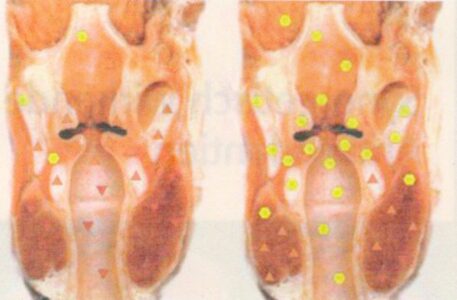
Figure 1: The measured energetic change of the
larynx of the client after a 30-minute “emotional
monitoring process” amounted to 80%
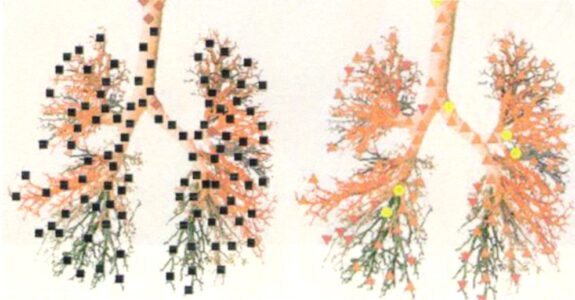
Figure 2: The measured energetic change in the
bronchial tree of the client after a 30-minute
“emotional monitoring process” amounted to 83%.
Summary and Evaluation of the Results
After realization of the “emotional monitoring process” an energetic change of single organ systems could be proven by means of measurement by the NLS device. The improvements lay between 63% and 91%.
These results supported the hypothesis that emotionally negative memories and experiences can also manifest at an organic level, and at last their treatment and resolution can again positively affect also the physical level.
Investigations on the Effect of epb on Migraine
According to Pschyrembel migraine is defined as an attack-like head pain which repeats and mostly appears half-sided (hemicrainia). It mostly begins in the early morning hours and lasts hours to days. With some patients a migraine aura precedes the migraine attack. Often while during [the attack] the optical or sensitive perception disturbances appear. However motor disturbances are also possible. The migraine is often accompanied by vegetative symptoms (i.e. feeling of sickness, vomiting), scared of light and noise, visual symptoms or neurological failure. The cause probably seems to be a vasoconstriction of the brain vessels. As triggering factors psychic burdens, climate influence, stimulants and among other things medications are considered. With the uncomplicated migraine the neurological investigation is unobtrusive, possibly unspecific EEG changes appear.
An investigation into the effectiveness of epb symptom changes were observed with 30 patients, who were diagnosed by orthodox medicine, already suffering for ten or more years from migraine (4 men, 26 women, ages from 26-74). All patients received at least two single sessions from 45- to 60-minutes long with “emotional monitoring process” over a period of four to six weeks.
Questions
- How do the patients subjectively assess their migraine symptom changes regarding frequency, intensity and their up to now limited treatability?
- Do the quite different parameters that were not understood until now in the assessment also perhaps change under the treatment?
- Can changes to the measureable functional states be determined after treatment with the method “emotional monitoring process”?
- As a matter to clarify another question is to what extent measuring values correlate with the evaluation of the subjectively given condition changes of the participants?
Investigation Approaches / Methods
For the subjective assessment regarding the change of symptoms standardized questionnaires were used which were to be filled in before and in each case four to six weeks after every treatment of the patients.
It was also tried to grasp with a written record the personal living conditions, past burdening events as well as individual strengths and weaknesses of every individual as additional information for the assessment of possible general changes. These indicated triggering events (among other things shock, death of a relative, termination of employment relationship, separation from a life partner, bad news, conflicts) and life phases (among other things puberty / beginning of menstruation, entrance into professional life, change of living conditions, home changes, moving, etc.), birth of children as well as emotions linked with it (like sorrow, sadness, annoyance, stress, achievement pressure, fury, helplessness, etc.).
For assessment of the effectiveness of epb the segmental diagnosis system AMSAT HC for the bioelectric measurement of biosignals was chosen for this investigation. The device measures the skin conductance at various select places on the body surface. Thus explanations about the functional qualities of the organ systems are given through measurements of the bioelectrical events in the body along the further transmission zones (volume resistance). Signals are received through the innervations of the skin surfaces and their segments, the neurophysiological complexes. This method enables the evaluation of Normergie, hypoergie (vagotonia), hyperergie (sympathicotonia) of corresponding areas and disturbance fields as a function of defensive strength and the Acid-Base-Balance of the body tissues, as a reaction to the measurement of the volume conductivity – it is therefore a method of electrometry.
Summary and Assessment of the Results
An evaluation of the questionnaires proved an average decrease of the frequency of the migraine per month by 32% after two sessions.
With patients who participated in additional sessions, a clear lengthening of the time free of migraines was observed. The intensity already decreased after the first session about 25%, after the second session about 50%. With 6 patients after two sessions they came to complete complaint freedom. The participants indicated feeling about 60% less restriction in their treatability and being better able to handle their condition during the migraine.
The “emotional monitoring process” worked with the “inner pictures” and feelings which the patient developed himself from the subconscious. With no manipulation from the study leader on the “migraine issue”, it had an effect so that in every single session individual issues could develop for each migraine patient. Just those individual issues were important for the patients at the moment of the session, i.e. for their personal development and also for their healing process. Once these issues were dealt with in the monitoring most patients at the beginning of the treatments were no longer aware of their meaning and importance.
So most impressive was the renewed experience and feeling of mostly long past events as well as the careful, cautious resolving and harmonization of the respective significant situations which were burdened with so many negative emotions. With their own words the participants described their condition after treatment as “relieved”, “liberated”, “released”, “lighthearted” up to “born anew”. According to their statements after the sessions with “old” issues from the past, but also with situations from everyday life as well as conflicts, many of the participants went around “differently” than before.
The segmental diagnostic evaluation showed a measurable change of the bioelectric signals with every study participant.
The effects of the “emotional monitoring process” are shown in the examples with the help of two patients in figures 3 to 6.
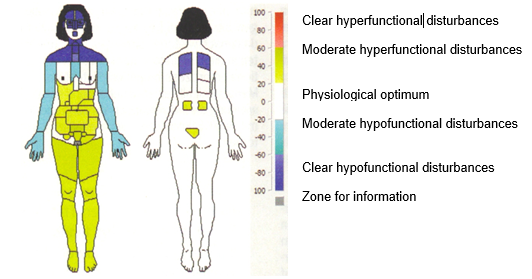
Figure 3: Female patient, 43 years old, before the treatment (measurement on 10.03.09, 12:08 PM)
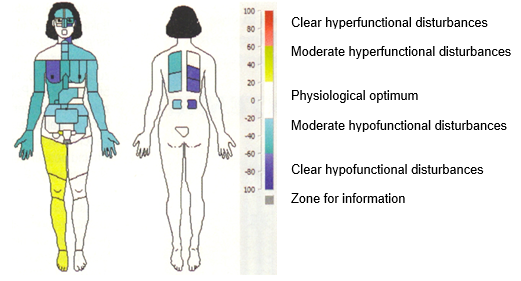
Figure 4: Female patient, 43 years old, after the treatment (measurement on 10.03.09, 1:07 PM)
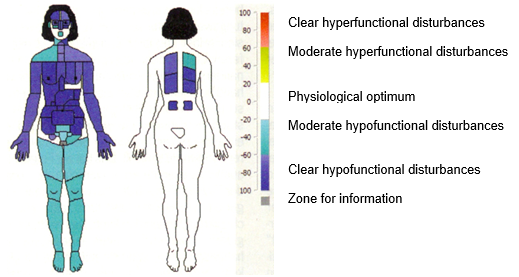
Figure 5: Female patient, 34 years old, before the treatment (measurement on 20.02.09, 10:00 AM)
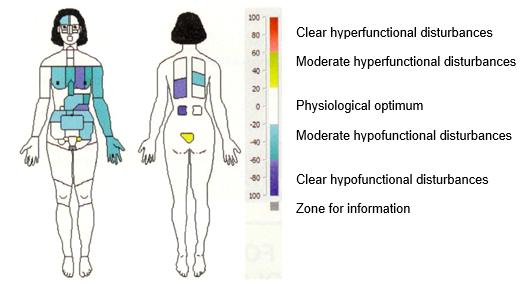
Figure 6: Female patient, 34 years old, after the treatment (measurement on 20.02.09, 10:49 AM)
Results
The effect of the “emotional monitoring process” can be proven by the subjective description of the patients as well as by the results of the biofeedback method. Nevertheless it clearly showed that the patients, according to the complexity of their individual “key experiences” dealt with the subconscious issues with different speed and intensity. This explains why “only” 6 patients after two treatments were complaint free and allows hope that after further sessions other patients will come into this condition. Thus with the “emotional monitoring process” the person with all his experiences and his development as an individual stands in the foreground, not with an illness or varied symptoms.
Relief, alleviation or even healing of suffering both on the psychic-emotional as well as on the physical level can be reached after processing of the subconscious burden issues.
With chronically ill people with whom I often work in my practice, small changes are already considered as a positive right direction for them in that they seriously think about themselves and their illness at the deeper level of the subconscious. In the treatment patients find out a lot about themselves and their issues, so that afterwards they perceive themselves and their condition mostly consciously and another understanding of the origin of their symptoms appears. The result of this is that even the so called first warning signals, of the psyche as well as of the body, can again be perceived and can accordingly be reacted to in good time. That means they no longer react with old adapted behavior patterns, but rather have the possibility and the chance to deal with and even to resolve issues in another form.
From my experience a comprehensive and lasting improvement of the condition at all levels or internal blockages dissolved is only thus achieved and the continued treatment with complementary therapies is possible.
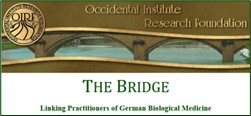 An Exclusive Translated Article for Members
An Exclusive Translated Article for Members
From THE BRIDGE Newsletter of OIRF
Published June 2011
From an article in CO’MED, No. 9, 2010
Machine Translation by SYSTRAN, Lernout & Hauspie, LogoMedia & Promt
Translation & redaction by: Carolyn L. Winsor, OIRF
© Copyright 2010, Simone Lindenau, HP, Berlin, Germany
Literature
- AMSAT Handbuch, (2004)
- Belyaev, Alexander; Doepp, Manfred; Zyganow, Victor: Lehrmaterial der “Global Scaling Akademie”, Falkensee
- Dahlke, Rüdiger: Krankheit als Symbol. Bertelsmann (1996)
- Hay, Louise: Heile Deinen Körper. Lüchow (1983)
- Lipton, Bruce: Intelligente Zellen: Wie Erfahrungen unsere Gene steuern. Koha (2006)
- Lübcke, Susanna; Söller, Anne: Emotional-Körper-Therapie – Glücklich und gesund durch die Heilung der Gefühle. VerlagM (2009)
- Peiseler, Götz-Johannes: Autogenes Heilen – Mit inneren Bildern gesund werden. GU (2007)
- Stumpfeldt, von, Dorothea: Eine heilsame Begegnung mit der inneren Welt. Stapp Verlag Berlin (2007)



